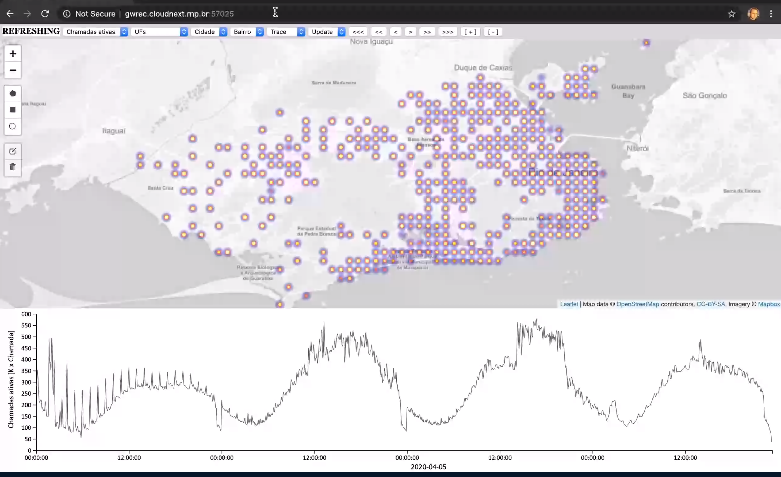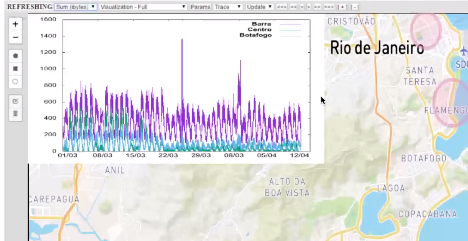RNP supports development of a tool that relates mobility to contamination by Covid-19
How can technology help to control the proliferation of the new coronavirus? The answer to this question is the essence of COVID -19 Borescope, a tool developed by a project of the Computing Science department of Universidade Federal Fluminense (UFF), coordinated by professor Antonio Augusto "Guto" de Aragão Rocha and developed by the student Nilson Luis Damasceno, supported by RNP. The project monitors the flow of people in the cities and correlates the mobility indexes with the data about the contamination, supporting the responsible bodies in the decisions related to releasing or hardening social isolation.
Part of the solution uses the results from the Network Borescope project financed in the so-called RNP and Microsoft Challenge in Artificial Intelligence and to be able to store the huge amount of received data, computer resources from testbed “CloudNEXT”, one of the results from the project Cloudlab-Brasil financed by Finep (Contract/Convention 01.17.0004.00), were used.
“In this pandemic situation, it is gratifying that we can support researchers and help in the work of the government’s departments, by means of combination of important results from R&D projects coordinated by RNP, such as CloudNEXT and Network Borescope itself. This reinforces the importance of partnerships with private companies that make feasible R&D Calls of Bids feasible, such as the RNP and Microsoft Challenge in Artificial Intelligence”, Gustavo Dias, R&D manager at RNP, says.
How does COVID-19 Borescope work?
- At every five minutes, the tool receives anonymized data provided by a mobile telephone company, which informs the amount of connections and indicates the antennas which the cellphones receive their signal from;
- The data is structured and optimized, enabling check in real time;
- The analysis results are shown in an interactive graphic interface based on a map, which enables check by region and neighborhood.
- In the future, upon provision of information from the health departments, series of algorithms will be able to correlate the mobility index to the information about the people contaminated by COVID-19 with the purpose to support public actions and policies to fight the pandemics.
“One of the project bottlenecks is the amount of data we receive. We need high capacity storage which we got only by the support from RNP, that provided all necessary architecture, with permission to access some equipment”, professor Guto says, also highlighting the main motivations and other possibilities of COVID-19 Borescope.
“We will present this tool to the departments for them to help performing actions and making decisions related to the pandemics. We understand that other kinds of analysis can be made: try to identify crowds in real time. We have already received data that enable us to do that identification. This can help departments and city halls to act. Another possibility is analysis of the correlation between the mobility index and information captured from social media, so that we can make an analysis of the feelings of the people in that region. We already have a collector running on Twitter, which will enable us to use natural language algorithms to identify the feelings and create correlation between the feelings and the mobility indexes.”.
"With this support, RNP shows its capacity to develop researches that support the work of the teams on the frontline of the combat to the pandemic, with practical application of the results from years of development in its R&D programs" , Alex Moura, Science Engagement specialist, who coordinates the Network Borescope project at RNP and the support to COVID-19 Borescope, explains.

